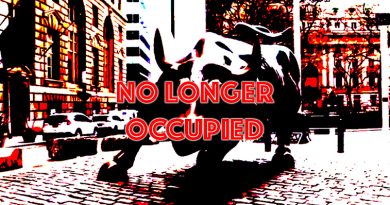Police response: trigger happy and terrified
Recent events unfolding in Charlotte, North Carolina have again sparked tensions over the connection between police violence and race relations within the local communities. A police officer has been charged with voluntary manslaughter in the killing of an unarmed Black man. The officer was a White male responding to a call by a woman in a suburban neighborhood. Members of the community are still coming to terms with the shooting and dealing with the loss.
The events of that night leave many unanswered questions and shake the already unstable foundation of police trust within the community.
In the early hours of the morning the victim, 24-year old Jonathan Ferrell, crashed his car in a neighborhood of Charlotte, North Carolina.
Around 2:30 in the morning the Charlotte-Mecklenburg Police Department received a 911 call from a woman in the community asking for assistance, claiming that a man was attempting to break into her house.
The caller was alone in the house with her baby and awoke to Ferrell, knocking frantically on her front door. Although it seems highly unlikely that a person intending to commit a robbery would knock loudly on the front door, the caller was noticeably afraid while on the phone with dispatchers so officers were sent to the address.
The officers claimed that when they arrived arrived Ferrell ran towards them, prompting the shooter, 27-year old police officer Randall Kerrick, to draw his gun. Kerrick then proceeded to fire his weapon twelve times, hitting Ferrell ten times and killing him. A few hours later Kerrick was arrested and charged with voluntary manslaughter.
The charge of voluntary manslaughter is defined as “killing another human being in which the offender had no prior intent to kill and acted during “the heat of passion,’ under circumstances that would cause a reasonable person to become emotionally or mentally disturbed.”
What happened between the unarmed Ferrell and Kerrick, the shooter, hardly seems justifiable under such a definition. Ferrell was unarmed and shaken from the car accident and was actively seeking help for himself.
Moving toward the police is not something to do when being stopped on the street, but when seeking assistance it would only make sense for someone in hysterics to move toward those who are able to provide help.
Kerrick was assisted by backup officers and was therefore armed and not alone, unlike the victim who was neither.
The Charlotte-Mecklenburg Police Department even released a statement explaining that Kerrick had no lawful right to discharge his weapon during the encounter. If even the police are admitting that this was an excessive use of force it must be.
Although the Black community is directly affected by this crime, the pain has transcended all boundaries with those living in Charlotte. In the state of North Carolina race remains a very prevalent topic, so many residents believe the shooting to be racially motivated.
The entire community as a whole is questioning racial motivations behind the killing. With such an excessive use of force applied to the killing of an unarmed Black man by a White police officer, these questions cannot be ignored or swept under the rug and forgotten.
Many local activists are pursuing the answers as to what happened and how to move forward in order to aid in the investigation of Kerrick.
Many within the community are aggressively calling for the charge to be upgraded to murder. This is not an unreasonable request since there were pauses between the twelve shots fired, meaning Kerrick paused before continuing to discharge his weapon into Ferrell.
During this time Kerrick clearly had to make decisions as to whether the victim was incapacitated or not. Many are claiming that the shooting is closer to an execution.
The police hardly seem to be the protectors of the community, especially when the victim’s own parents are too frightened to speak to them regarding the death of their son. In a poll taken four days before the killing many within the Black community expressed a less than satisfactory performance by the department. If the police were doing their job correctly people in marginalized communities should be more than willing to speak to them, but this is not the case.
Society has long been taking the shape of an Orwellian scenario where roving gangs of uniformed, heavily militarized police march the streets striking fear into those they cross. The large amount of distrust in the police is not only present in Black communities, but many other communities as well.
The increasing militarization of the police force and its ideologies are beginning to impress a permanent state of fear within the communities they have taken oaths to protect. The whole picture seems counterproductive and an image of George Zimmerman with a badge comes to mind.
How many more shootings of unarmed victims like Victor Ortega and Amadou Diallo must a society endure before it critically examines the direction the police force is heading?
For the time being it seems that strong neighbor relations must be formed in order to create a stronger sense of community and security. Within a well-informed and supportive community a sense of autonomy for that area may be established. Small gestures like becoming familiar with neighbors or creating a “copwatch” committee in order to survey and hold officers accountable for their actions may be all that is needed in order to regain some control over unchecked police violence.

Moose is a California native with separate roots in Baltimore, Maryland. He has studied writing and literature and enjoys both in his spare time. He often travels and practices sustainable farming. He has spent time in the rolling mountains of Appalachia as well as many states within North America. He is an avid cyclist and lives in Southern California.

